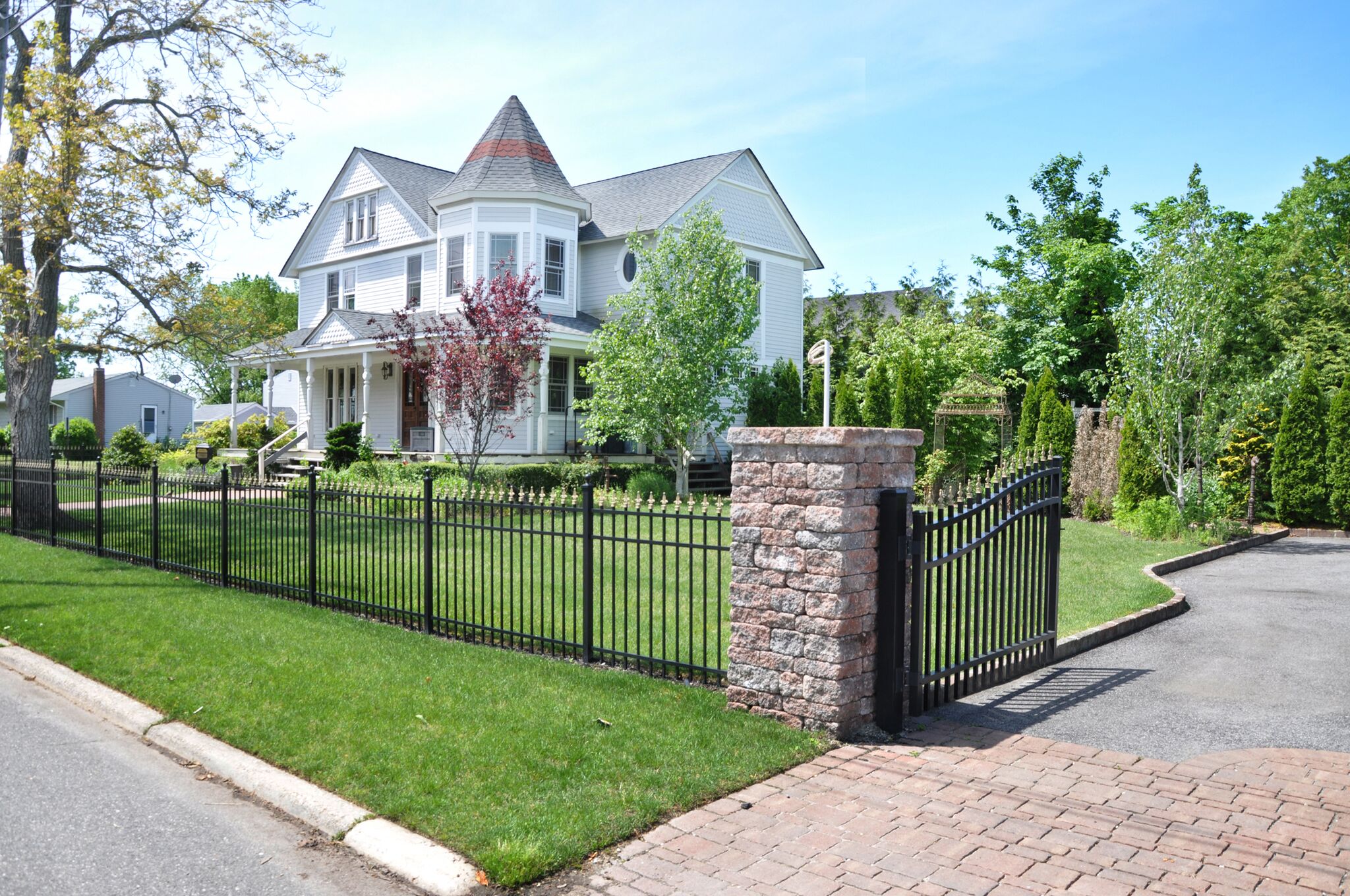- Fence Maintenance
How to Clean an Ornamental Iron Fence
Stately, strong and secure, ornamental iron fences provide a touch of elegance and sophistication to the properties they adorn. Beyond the aesthetic appeal of this classic style, ornamental iron fencing has a couple other advantages over other common types of fences, such as wood and vinyl. It is long-lasting and won’t warp, rot, or deteriorate quickly, which makes it a good fit for the snow- and wind-prone Colorado Front Range. Iron fences also offer good visibility and they’re insect- and pest-resistant.
Stately, strong and secure, ornamental iron fences provide a touch of elegance and sophistication to the properties they adorn.
Beyond the aesthetic appeal of this classic style, ornamental iron fencing has a couple other advantages over other common types of fences, such as wood and vinyl. It is long-lasting and won’t warp, rot, or deteriorate quickly, which makes it a good fit for the snow- and wind-prone Colorado Front Range. Iron fences also offer good visibility and they’re insect- and pest-resistant.
%20(1).jpg?width=900&name=SRF%20New%20Featured%20Images%20(3)%20(1).jpg)
Best Uses for Ornamental Iron Fences
As a more traditional material, iron fencing is generally considered a suitable fit for historical homes and luxurious estates. However, iron fencing is also available in sleek, modern silhouettes and designs that increase its versatility and makes it compatible with a wide variety of home styles. Additionally, the advent of ornamental iron fencing, which looks similar to iron but is fundamentally different, makes the style more accessible. Unlike iron, which is handmade and primarily crafted from iron with added iron silicate, ornamental iron is made from steel—a synthetic alloy of carbon and iron that is easier to manipulate and more affordable.
You can use ornamental iron fencing to create a sturdy boundary on your property without making it appear too closed off or uninviting. Also, because the spaces between the balusters result in enhanced visibility, this style of fencing is the perfect frame for a manicured yard, lush garden, or other beautiful landscaping.
Ornamental iron also makes for elegant driveway gates that create an eye-catching focal point on your property’s exterior, while simultaneously increasing your sense of safety and security. You can find a plethora of different iron fencing styles, shapes and designs to complement the look of your home and outdoor spaces, including your other hardscaping and landscaping.
How do You Clean an Iron Fence?
Although they are strong and durable, you still must take good care of your fence to preserve its appearance and increase its longevity, no matter what material it is made of. Because high-quality iron can be one of the more costly fencing materials, routine maintenance is critical to protect and make the most of your investment. Here are a few tips to help you properly care for ornamental iron fencing on your Colorado Front Range property:
1. Inspect Regularly
At least once per year, you should thoroughly inspect your fence and look for loose hardware and other damage. This allows you to take care of cracking and rusting before it spreads or worsens. If you find a serious problem you can’t fix on your own, such as bent sections, contact a professional fence company to help with repairs.
2. Clean Routinely
Ornamental iron can collect dust and dirt on the windy Colorado Front Range. The accumulation of dirt and grime—as well as damp and harsh environments—makes your fence more likely to attract rust and corrosion. All it takes is warm, soapy water and a sponge to wash down your fence, although you may need a small cleaning brush to scrub the crevices, narrow spots, and decorative finials. Rinse off the fence with your garden hose and then wipe it dry with a towel or let it air-dry if the weather permits. Make sure you don’t leave behind traces of soap residue, as it can lead to discoloration. You also can better maintain your fence by checking regularly for weeds and vines growing around or on the fence and removing them before they get out of hand.
3. Remove Rust
While it would take several years of being left unattended for an ornamental iron fence to weaken structurally, it is still best to tackle rust spots as they emerge and before they have a chance to penetrate the metal. Rust is also easier to remove in its initial stage. Use sandpaper and fine wire brush to remove rust spots on your fence or gate, and then touch up the area with a protective spray, wax, or paint.
4. Protect the Metal
Whether you’re dealing with rust or taking preemptive measures to protect your ornamental iron fence, wax, water-repellant spray, or rust-inhibiting paint are key. Before you paint, apply two coats of a primer that is suitable for the metal and follow it up with two coats of paint. You can expect to occasionally touch up spots on the fence as needed and then fully repaint the whole surface every 10 to 15 years.
The Long-lasting Value of Ornamental Fencing
One of the best characteristics of ornamental iron fencing is the limited maintenance it requires. If you regularly wash down your fence, remove rust, and touch up the protective coating, the structure can serve your families for many years to come. If you are interested in installing a new ornamental iron fence on your Colorado Front Range property, our team at Split Rail Fence Company can supply the materials and handle the installation, as well.
Sources
“Hardscaping 101: Wrought Iron Fences.” Gardenista article, published Sept. 21, 2017. Accessed online at https://www.gardenista.com/posts/hardscaping-101-wrought-iron-fencing/
“How to Clean Wrought Iron Gates.” DoItYourself.com. Accessed online at https://www.doityourself.com/stry/how-to-clean-wrought-iron-gates

